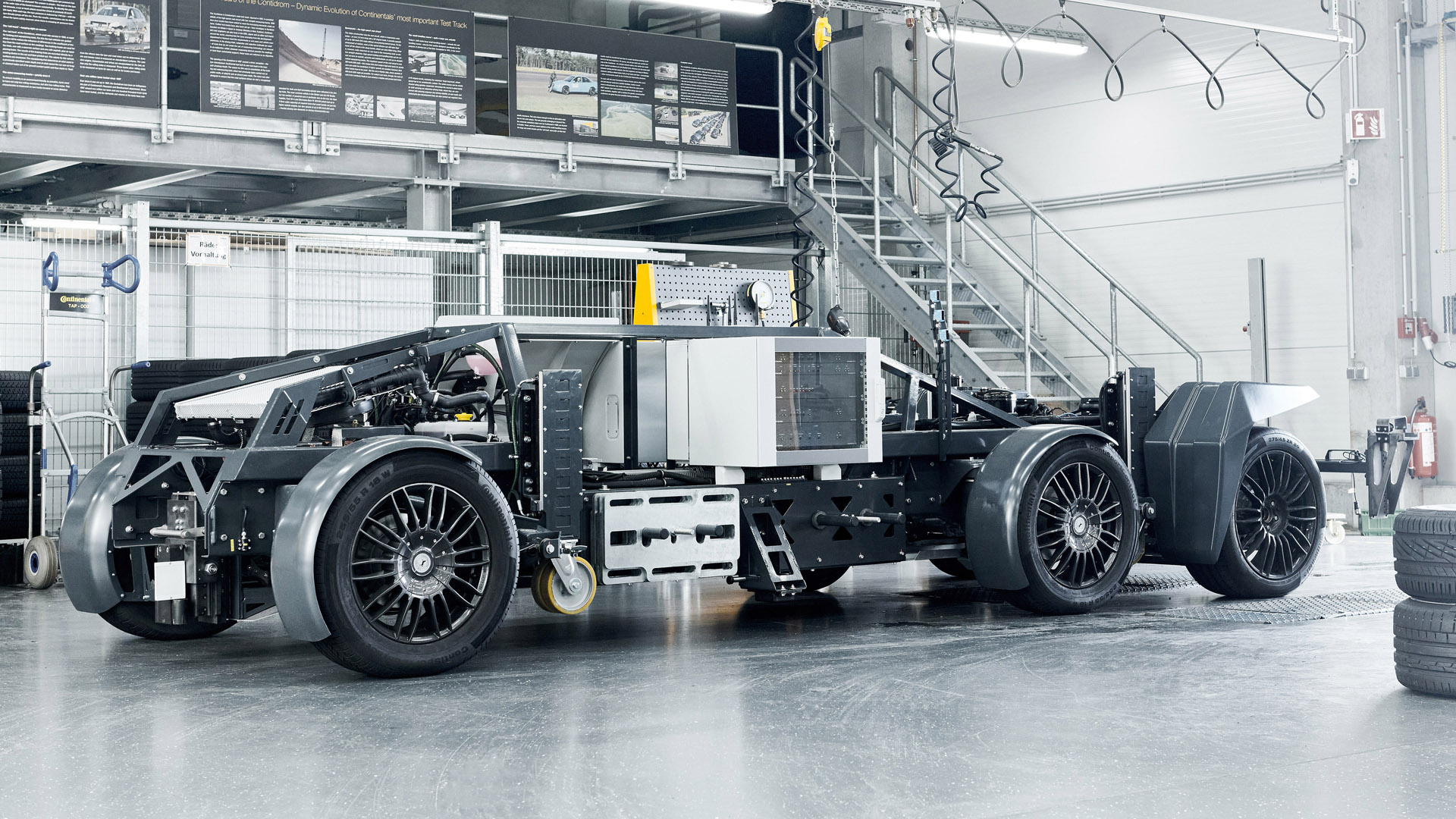

Tires are going to be a big conversation in the near future of automotive. Of course, we’ve always known that they matter, but tires are set to be one of the main issues in pollutant and performance terms for how cars are legislated about and built going forwards. As cars get bigger and heavier, the demands on tires do too, so Continental has built a crazy-looking robot truck to run hundreds of thousands of braking simulations per year.
The vehicle is called AVA, which in an incredibly German move (the test facility is in Hanover) stands for another acronym: Analytic Vehicle AIBA. AIBA means Automated Indoor Braking Analyzer, which is technically more where the automated test vehicle works rather than talking about it.
Continental has built a pretty sweet test track that can be laid with different road surfaces and even made wet or dry, that AVA then runs on to simulate braking and test the tires.

What happens is that a system similar to what’s used to move rollercoasters (an electromagnetic linear drive, if you want to be specific) rapidly accelerates the AVA to 40 miles per hour and then the AVA can keep itself going using its front and rear axle motors. It’s actually the third set of tires that get tested in the braking events, while the AVA chugs on through whatever conditions are being simulated. And it does it all on a test track that’s only 82 yards long.
It’s all about working out the slippage, explained Meletis Xigakis, Continental’s head of global tire testing: “Our AVA determines the transmission of forces between the tire and the road surface, while various slipping states, so-called ‘µ-slip curves,’ are precisely reproducible. With the state-of-the-art measuring technology we measure all of the forces which act between the tire and the road surface during braking. We can compare our tires and their various compound compositions even more precisely and optimize them for their special uses.”
That’s all very fancy. What you need to know is that there’s a six-wheeled robot EV running on rollercoaster tech being put to work on over 100,000 tire tests a year to make sure if you brake in the rain your supercar isn’t going sliding.

Got a story tip? Mail it in on tips@thedrive.com